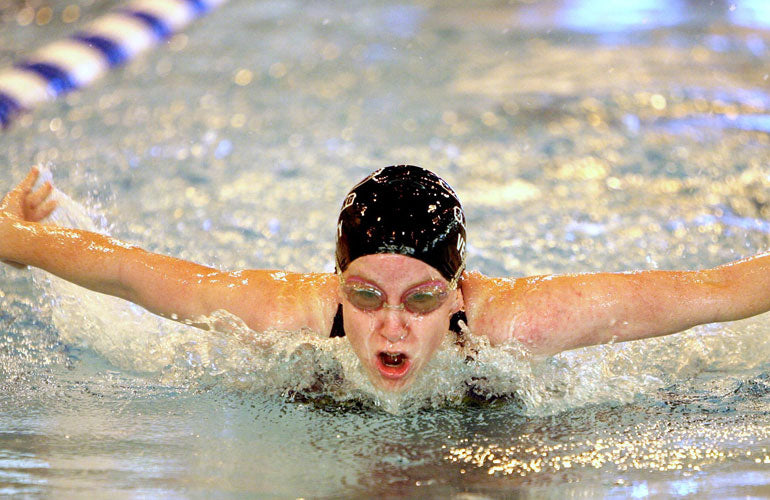Many swimmers outside of professional competition, shy away from the butterfly stroke. It’s widely regarded as the most difficult and exhaustive stroke to master – but if you manage to, you can reap some fine rewards in the process.
The Butterfly Stroke: Perfecting the Most Difficult Stroke of All
So without further ado, let’s take a closer look at the mechanics of the butterfly stroke…
Which Muscles Does the Butterfly Stroke Target?
It might be easier to answer, which muscles it doesn’t target. To quote Swimming World Magazine, the butterfly stroke ‘requires the fullest whole body muscle engagement out of the four strokes and the most arm muscle engagement per stroke cycle. While butterfliers often complete less stroke yardage than their counterparts, their high-intensity training promotes toned muscles throughout the body.’
It is especially good for activating the deltoid and trapezius shoulder muscles, as this is where the power is generated for the initial arm stroke. It requires explosive and dynamic movement that hits the full range of motion – building muscle and endurance across this whole muscular section.
The upper and lower back muscles are also engaged throughout the entire stroke, and the hamstrings and calves play a significant role in the leg movement required. So in summary, the butterfly stroke is one of the most ‘total body’ workouts you can do.
How to Perfect Your Butterfly Stroke: Start to Finish
We aren’t going to lie to you, this is the most intimidating and challenging swimming stroke to perfect. It requires a lot of practice, patience and stamina if you wish to get consistent and powerful at it. But as a workout, and as a refreshing change from the normal freestyle or breaststroke options, it’s something worth trying! So below, we have done our best to outline the steps needed to master the movement from beginning to end.
Butterfly Stroke: Arm Movement
Firstly, you want to extend/reach your arms above your head and, in a scooping motion, pull your hands into your body, finishing with your palms facing out. You want to continue this movement with your arms all the way down your side, pushing as much water as you can, as hard as you can.
You then pull your arms up your thighs and begin the movement again from the top.

Butterfly Stroke: Leg Movement
Getting the timing right with your kicks is important and a little more difficult than other strokes. At the point when your arms are beginning to pull back through the water, you need to make an initial small kick, both legs together.
When your arm stroke finishes, this is when you make a bigger kick to maintain propulsion evenly. The kicks are akin to a dolphin fin, your legs should act as one big movement together. You should think of your body as a wave throughout this stroke, and this is what generates the power and movement through the water.
How Many Calories Does the Butterfly Stroke Burn?
Out of every swimming stroke, it is little surprise that the butterfly burns the most calories. With its high exertion, you can burn north of 450 calories per hour with it. This is more than freestyle, backstroke and breaststroke. However, we want to make it clear that this can be a misleading statistic from a practical point of view. The reason being - butterfly is the hardest stroke to maintain, certainly for an hour. Keeping good technique and having the sheer endurance and lung capacity needed to reap the rewards of the calorie number cited above would be very difficult for most people.
For this reason, we recommend it as a supplement and occasional change/challenge to your swimming workouts. Breaststroke and freestyle remain the best and most consistent staples to your routines, as they take less toll on your joints and muscles, while still delivering exceptional workout value across the board.
We hope you have found this article useful, and good luck in giving the butterfly stroke a try.

